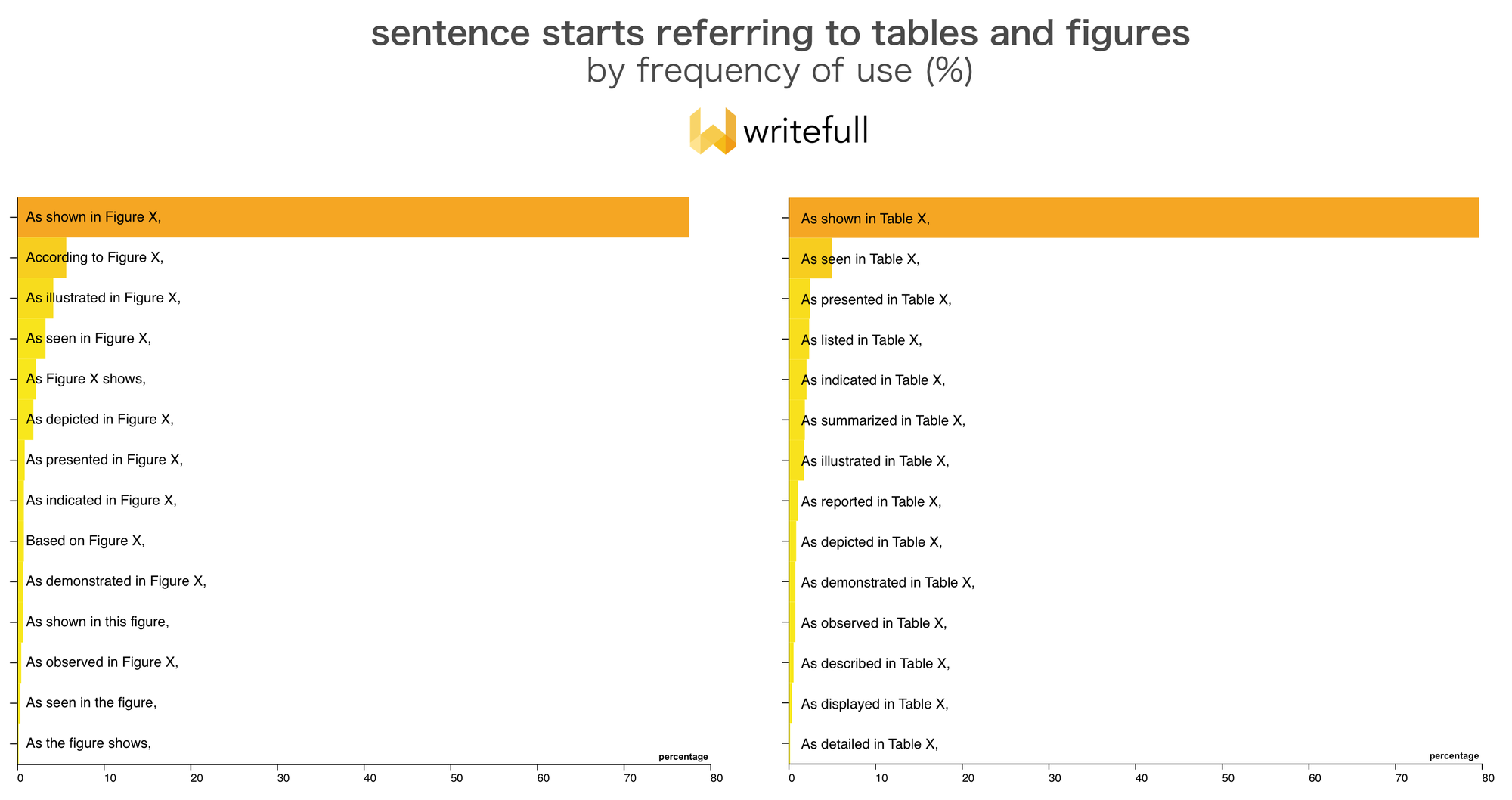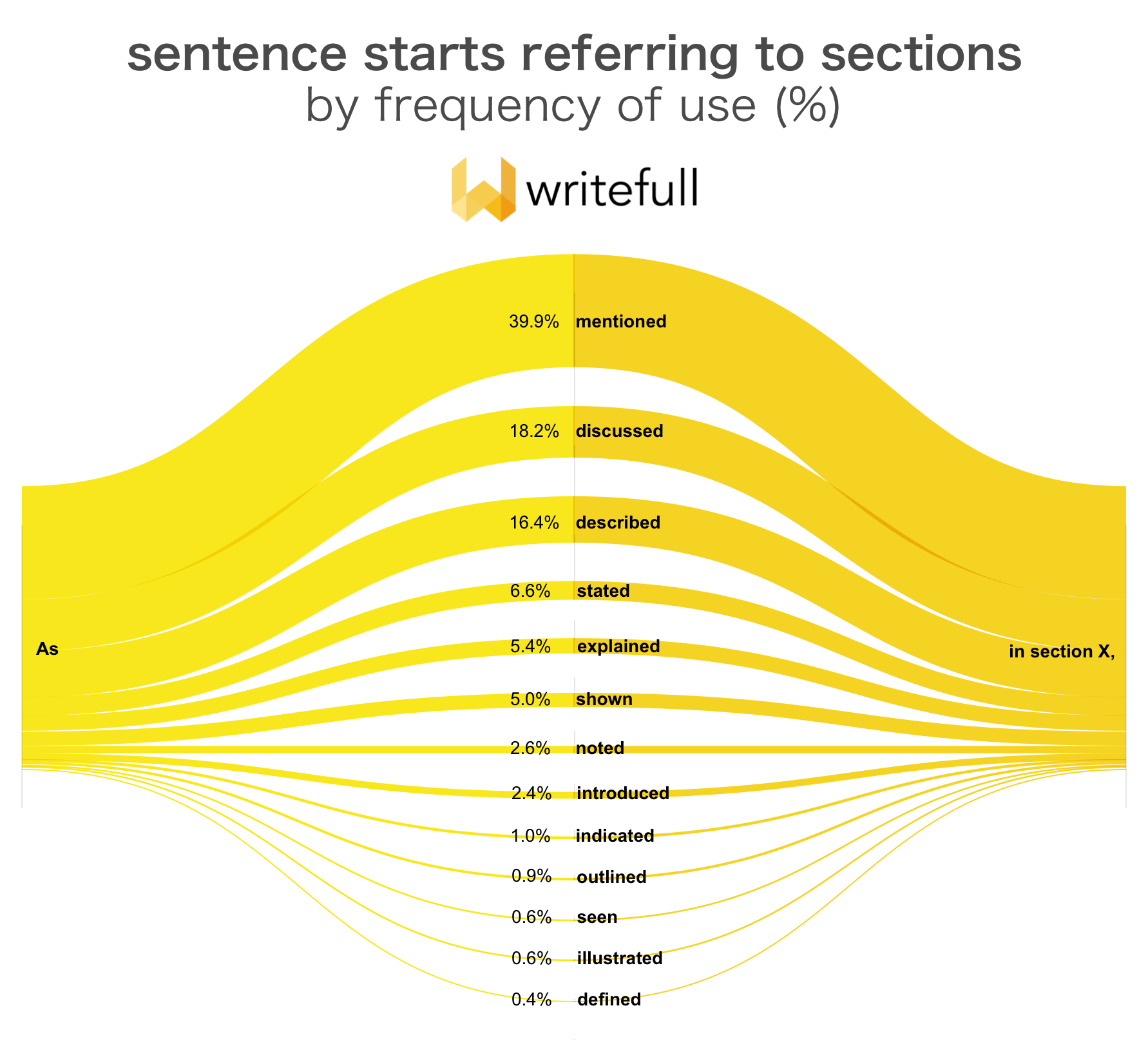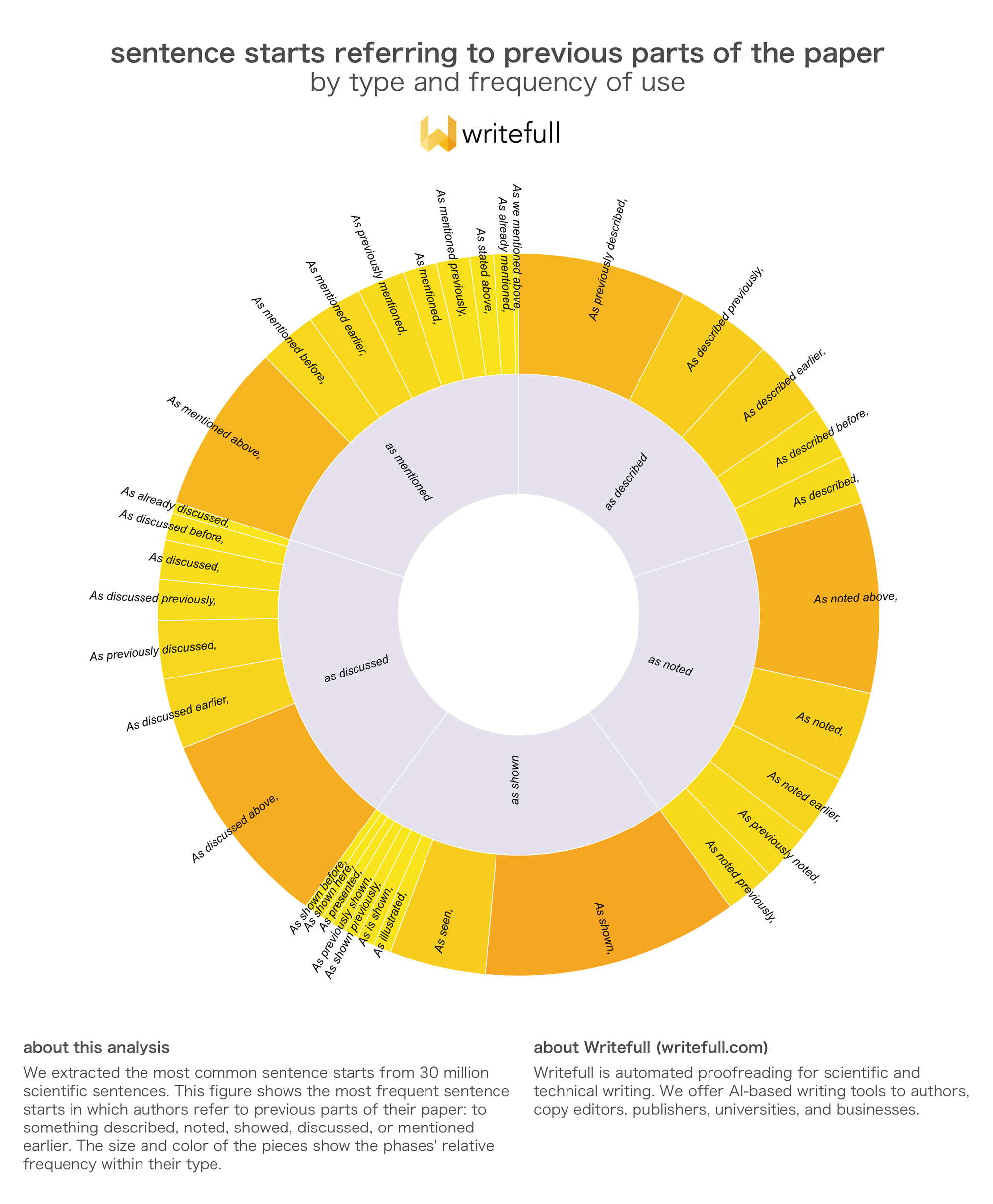Cross-referencing, or referring to sections or objects elsewhere in your paper, is important for making your text structured and coherent. But how do you do this? For this post, we analyzed how authors usually cross-reference within their research paper.
Our analysis
You may have seen our recent analysis on the most frequently used sentence connectors in academic writing, based on a data set of 30 million sentences from published papers.
For the current post, we used the same data set, but this time we explored how authors cross-reference within their paper. We extracted and analyzed three types: 1) references to tables and figures; 2) references to other sections of the paper; and 3) references to previous parts of the paper (something covered before).
1. References to tables and figures
Where authors start their sentence referring to a table or figure, the most frequent phrases are:
1 - In table/figure X, …
2 - From table/figure X, …
3 - Table/figure X shows …
After these, authors often write ‘As [verb] in table/figure X, …’; for example: ‘As shown in table/figure X, …’. Below, you see a list of frequent phrases, most of which follow this construction.

2. References to other paper sections
The most frequent phrases to refer to other sections are:
1 - In Section X, ...
2 - In the next section, ...
3 - In the following section(s), ...
Just like we saw with references to figures and tables, a popular construction is ‘As [verb] in section X, …’. The figure below shows the entire list following this construction.

3. References to previous parts of the paper
In some cases, you might want to refer to something you’ve already covered in your paper: a theory you’ve explained or a point you’ve made earlier on, for example. Authors usually make these cross-references starting with ‘As …’. The image below shows the most frequent constructions used. They all follow the same pattern, with changes in the verb used (as mentioned, described, noted, shown, discussed), their word order (As discussed previously vs. As previously discussed) and word choice (previously, earlier, before, or above).

About the author
Hilde is Chief Applied Linguist at Writefull.
Writefull webinars
Looking for more academic writing tips? Join our free webinars hosted by Writefull's linguists!

